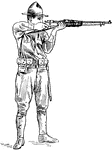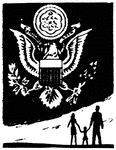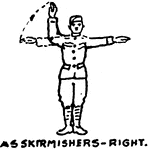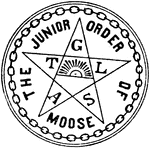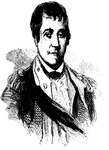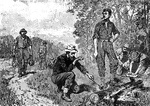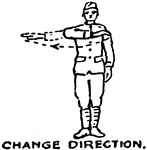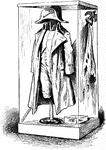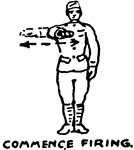
A Roman Soldier, or Legionary, with a Short Javelin and Shield
Illustration of a Roman soldier, also called a legionary, carrying a shield, short sword, and a short…
Abatis
"Abatis consisting of trees lying parallel to each other with the branches pointing in the general direction…
Aim
"Left eye closed, right eye looking through the notch of the rear sight so as to perceive the object…
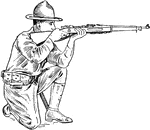
Aim kneeling
"In aiming kneeling, the left elbow rests on the left knee, point of elbow i nfront of kneecap." —…
Aim lying down
"In aiming, lying down, raise the piece with both hands; rest on both elbows and press the butt firmly…

Battle of Antietam
The Battle of Antietam (also known as the Battle of Sharpsburg, particularly in the South), fought on…

Fire Arm
A firearm design where a sliding charger is positioned under the barrel, allowing for faster reloading…

As Skirmishers, Guide Center, March Signal
"Raise both arms laterally until horizontal; swing both simultaneously upward until vertical and return…

As Skirmishers, Guide Right (Left), March Signal
"Raise both arms laterally until horizontal; hold the arm on the side of the guide steadily in the horizontal…
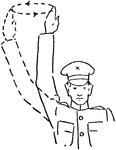
Assemble, March
"Raise the arm vertically to its full extent and describe horizontal circles." — Moss, 1914
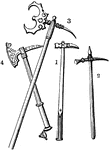
Four Axes
An illustration of four various axes: "1, Horseman's hammer of about the time of Edward IV; 2, Martel-de-fer,…
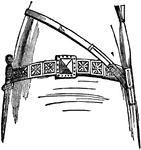
Baldrick
"A band or sash worn partly as a military and partly as a heraldic symbol. It passes round the waist…

Ballista
"Amoung the larger kinds of military weapons in use before the invention of gunpowder. The balista,…

Barracks
An illustration of military barracks. Barracks are living quarters for personnel on a military post.…

Comte de Barras
A French Jacobin, born in Province, in 1755, of an ancient family; served as second lieutenant in the…

Battering Ram
"Batering-ram, an engine for battering down the walls of besieged places. The ancients employed two…

Battlefield
A battlefield refers to the location of a battle. Generally, a battle is a conceptual component in the…
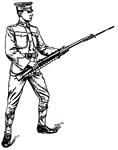
Bayonet Guard
"At the second command sake the position of guard; at the same time throw the rifle smartly to the front,…
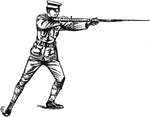
Bayonet Thrust
"The force of the thrust is delivered principally with the right arm, the left being used to direct…
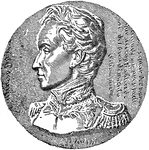
Simón Bolívar
A Venezuelan military and political leader. He helped lead Bolivia, Colombia, Ecuador, Panama, Peru,…
Bolt Mechanism
"Parts shown are handle, A; sleeve, B; safety lock, C; cocking peice, D; safety lug, E; extractor, F;…

Bolt mechanism dismounting
"Place the cutoff at the center notch; cock the arm and turn the safety lock to a vertical position,…

The Burrows Medal
This medal was presented in honor of William Ward Burrows (1785-1813) who was slain while in command…

Camp chimney
"Four such trenches radiating from a common central chimney will give one flue for use whatever may…
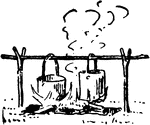
Camp kettle
"Camp kettles can be hung on a support consisting of a green pole lying in the crotches of two upright…

Camp Kitchen
"A still greater economy of fuel can be effected by digging a similar trench in the direction of the…
Carbine
"U.S. Carbine, CAL. .30, M1." -War, 1944 A carbine is a firearm similar to a rifle or musket, but generally…

Cavalry obstacle
"A formidable obstacle against cavalry consists of railroad ties planted at intervals of 10 feet with…
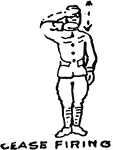
Cease Firing
Order given to stop hostilities on the battlefield. Soldiers stop shooting their weapons when this signal…

Change Direction Signal
"The hand on the side toward which the change of direction is to be made is carried across the body…
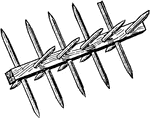
Cheveaux de frise
"They are usually made in sections of manageable length chained together at the ends." — Moss,…
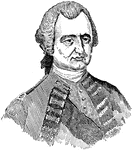
Robert Clive
Lord Clive was a British officer who established the military and political supremacy of the East India…
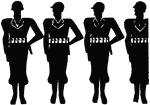
Close Military Interval Measurement
An illustration of military personnel measuring close intervals.

Construction Layers of a Section of the Appian Way
Illustration of the various layers of a Roman road. This is a section of the Appian Way, built across…

Oliver Cromwell
Oliver Cromwell (25 April 1599 Old Style– 3 September 1658 Old Style) was an English military…
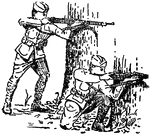
Firing from the Crouched and Standing Positions
Two soldiers firing their weapons. One is standing behind a tree, while the other is in the crouching…
